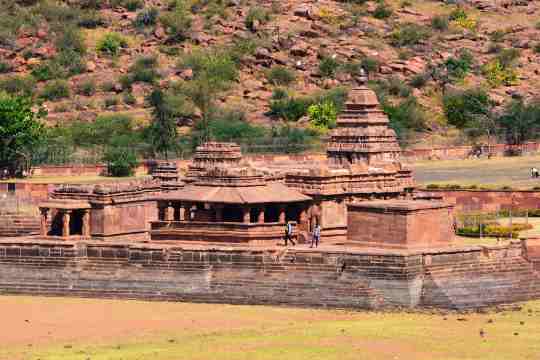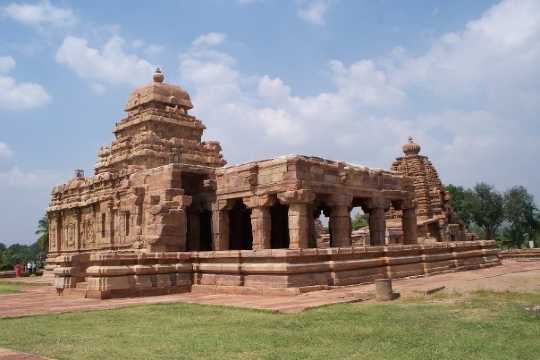Badami Travel Guide
Discovering the Hidden Treasures of Badami: A Travel Guide
Badami is a small town in the northern Indian state of Karnataka. It is known for its ancient temples and cave shrines, which date back to the 6th century. Badami is a popular destination for tourists and history enthusiasts, as it offers a glimpse into the rich cultural and religious heritage of India.
The main attraction in Badami is the group of cave temples that were carved out of sandstone cliffs by the Chalukya rulers in the 6th and 7th centuries. These temples are dedicated to Hindu gods and goddesses, and feature intricate carvings and sculptures that depict scenes from Hindu mythology. The cave temples are a UNESCO World Heritage Site and are considered to be some of the finest examples of Indian rock-cut architecture.
In addition to the cave temples, Badami is also home to several other historical and cultural attractions. These include the Agastya Lake, which is a beautiful man-made lake surrounded by temples and shrines; the Badami Fort, which offers stunning views of the surrounding landscape; and the Archaeological Museum, which displays artifacts and sculptures from the Chalukya period.
Badami is also a great place to experience the local culture and traditions of Karnataka. The town is known for its handicrafts, such as carved sandalwood and rosewood items, and for its delicious cuisine, which features dishes made with local spices and ingredients.
Overall, Badami is a fascinating destination that offers something for everyone. Its ancient temples, beautiful landscapes, and rich cultural heritage make it a must-visit for anyone interested in Indian history and culture.
Speak to someone
who's been there

+91-9873003099
MAKE AN ENQUIRYBest Places To Visit In Badami
From historical cities to natural wonders, come see the best of Badami.

Agasthya Lake
Agastya Lake (pilgrimage) is a huge lake situated below the cave temples. Built in the 5th century, the lake is considered sacred due to the healing powers of its water. The eastern bank of the Agastya Lake is dotted with the Bhootnath temples, while the cave temples are located on the south west side and the fort on the north west end. According to the Puranas, Pushkarini was the pleasure tank of the Lord in Vaikuntha, and is the beloved of Lakshmidevi and Bhudevi. Pushkarini was brought and installed here by Garuda, the vehicle of Lord Vishnu. It is believed that bathing in it washes away all sins.

Aihole
The town of Badami, the nearby villages of Aihole and Pattadakal in the Malaprabha Valley of central Karnataka, is celebrated for its magnificent rock-cut temples and structural temples. These Hindu and Jain monuments are associated with the early Chalukyas who ruled this part of the Deccan during the 6th – 8th centuries. Together these temples and shrines can be considered as one of the oldest preserved remains of temple art in India. Ray The earliest example of a Dravidian-style structural temple in South India is found at Aihole, built in AD 634.

Archaeological Museum
The Archaeological Museum at Badami includes ancient stone tools and findings like sculptures, inscriptions, precious stones, etc., dating back to between the 6th and the middle of the 16th century. Here, the Lajja Gauri and other Katha panels (Makara Toran) representing predators like lions, tigers, etc., are some of the sought-after attractions, mainly famous for their majestic appearance. Apart from this, this great museum also houses many other historical findings and documents. Thus, this museum should be included in the list of places to visit in Badami.

Badami Fort
adami Fort was built by the Chalukya king Pulakesi in 543 AD. Perched on a cliff top, this fort dates back to the 5th century with two pagoda complexes. There is also a 16th century and 14th century watch tower on top of this hill. There are many decorated gateways built of rock with carvings. The path to the fort was carved out of a huge red stone hill, which gave the fort a unique setting. There are several water storage beds on the way upstairs. There are two temples inside the fort, which are known as Lower Pagoda and Upper Pagoda.

Banashankari Temple
Banashankari Temple is located in Cholchagudda. Dedicated to Banashankari Devi, an incarnation of Goddess Parvati, it is one of the famous temples in the district. The original temple was built in the 8th century, believed to have been built by the Rashtrakutas, but the present structure traces its origins back to the 17th century. This temple represents a combination of Dravidian and Nagara temple architecture. Haridra Tirtha, a large temple pond with a tall lamp tower built on a three-storey structure, is located opposite the temple entrance and is a sight to behold. The entire pond is surrounded by a corridor made of stone.

Bhutanatha Temple
Dedicated to Lord Shiva, Bhootnath is one of the two major temples in the temple group that extends up to the Agastya Lake. The deity is worshiped here in the Bhootnath avatar (god of spirits). Built in sandstone, the temple has an open mandapa (hall) that reflects the South Indian Dravidian and North Indian Nagara styles of architecture. The inner temple is believed to have been built by the Chalukyas in the 7th century. Behind the temple, incarnations of Lord Vishnu and Jain figures are carved. Another attraction near the temple is the Badami Cave Temple which is a group of four cave temples.

Badami Cave Temples
Deep in the rocky mountains of Bagalkot district in northern Karnataka, lies an architectural wonder. In the small town of Badami in Bagalkot district are the rock-cut Badami Caves, a complex of Hindu and Jain cave temples. The cave temples at Badami are the remains of the Chalukya dynasty who ruled the city between AD 540 and AD 757. The popular cave temples around Agastya Lake are an example of Badami Chalukya architecture and Indian rock-cut architecture. The temples in the Badami Caves were built between the 6th and 8th centuries by the Chalukya kings, Kirtivarman and Mangalesh.

Lower Shivalaya
Built in the 7th century by the ancient Chalukya dynasty, the lower pagoda temple is part of a series of temples located on the northern hill of Badami. Dedicated to Lord Ganesha, the lower pagoda, in its original glory, comprises a small porch, a hall and a double-walled sanctuary. This intricately carved rock-cut structure is perhaps the oldest and best surviving example of the grandeur of the Dravidian style in early Chalukya architecture. While the devastation of time and war has stripped away some of its original construction, the remains have been beautifully preserved, the current building continues to draw tourists from far and wide on its grandeur.

Mahakuta Temples
Mahakoot Temple is an ancient group of temples dedicated to Lord Shiva. A beautiful place surrounded by hills, Mahakoot was once a hotbed of Shaivite culture. The temples were built between the sixth and seventh centuries by the early kings of the Chalukya dynasty. This main temple was built in the Dravidian style, while several smaller temples are seen in the Nagara style. Surrounding the main temple are several smaller shrines which have splendid carvings on their walls. This place is often called Dakshina Kashi due to its religious importance. The walls of the temple are covered with bas relief works and carvings of great artistic expertise.

Malegitti Shivalaya Fort and Temple
A grand example of ancient Chalukya architecture, the Malegitti Pagoda Fort and Temple is a beautifully carved, rock-cut temple atop a rugged rocky outcrop in Badami. The temple was built in the 7th century and is perhaps the oldest and best surviving example of the grandeur of the Dravidian style in early Chalukya architecture. The fort is located next to the Badami Archaeological Museum. From here there is a breathtaking view of the lake and the caves. The Malegitti Pagoda was originally dedicated to the Sun God Surya.

Mallikarjuna Temple
Mallikarjuna Temple Group is a group of temples dedicated to Lord Shiva. These temples are located in a closed complex just before the Boothnath Temple. Built in the Phamasana style (stepped pyramids), these temples are believed to have been built during the Rashtrakutas and Kalyani Chalukyas. The outer walls of the temple are plain rock without any carvings. The tower of the inner sanctum is built in the typical Rashtrakuta style of architecture. The main temple has a pillared mandapa, an enclosed central mandapa followed by an inner sanctum. The inner walls and pillars are mostly plain.

Pattadakal
Pattadakal is also referred to as Pattadakallu or Raktapura and having a mix of 7th and 8th century Hindu and Jain temples. Temples built here are predominately dedicated to Lord Shiva and it faces east.This amazing temple is famous for its sculptures inspired by the stories of Ramayana and Mahabharata. Similarly, some of the attractions within the temple are built based on the Dravidian style.

Upper Shivalaya
Perched on top of the northern hill of Badami, the Upper Pagoda is a fine example of the rock-cut architectural style of the ancient Chalukya Empire. Built in the 7th century, this impressive structure offers a spectacular panoramic view of the city of Badami and the beautiful Agastya Lake. The grand boulder area also has a large granary, double fortification walls, various architectural wonders and an underground chamber. The lower pagoda and the Malegitti pagoda can be seen from here.
Best Travel Packages For Badami
Find the best deals on Badami Tour Packages for solo, family & group travelers.
Looking for a custom trip plan?
It only take 2 minutes to plan your own holiday itinerary.

